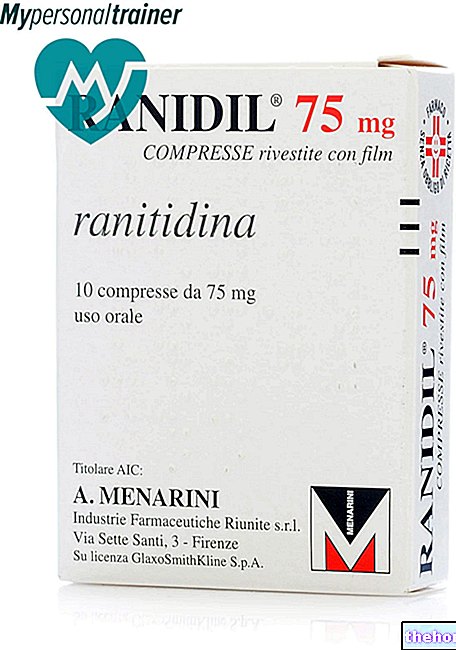Active ingredients: Propranolol (propranolol hydrochloride)
INDERAL 40 mg tablets
Inderal package inserts are available for pack sizes:- INDERAL 40 mg tablets
- INDERAL 80 mg prolonged-release hard capsules
Why is Inderal used? What is it for?
PHARMACOTHERAPEUTIC CATEGORY
Non-selective, non-associated beta-blockers.
THERAPEUTIC INDICATIONS
- Control of arterial hypertension.
- Treatment of angina pectoris.
- Post-infarct prophylaxis.
- Control of most forms of cardiac arrhythmia.
- Migraine prophylaxis.
- Treatment of essential tremor.
- Control of anxiety and tachycardia on an anxious basis.
- Adjuvant in the therapy of thyrotoxicosis and thyrotoxic crises.
- Treatment of obstructive hypertrophic cardiomyopathy.
- Treatment of pheochromocytoma (associated with an alpha-receptor blocking drug).
Contraindications When Inderal should not be used
Inderal is contraindicated in patients with a history of bronchial asthma or bronchospasm, chronic obstructive pulmonary disease.
Like all other beta-blockers, Inderal must not be administered to patients with: hypersensitivity to the active substance or to any of the excipients; bradycardia; cardiogenic shock; hypotension; metabolic acidosis; prolonged fasting; severe disorders of peripheral arterial circulation; kidney failure; 2nd and 3rd degree atrioventricular block; sinus node disease; untreated pheochromocytoma (with an alpha blocker); heart failure; Prinzmetal's angina.
Inderal must not be combined with verapamil and diltiazem therapy.
Inderal must not be used in patients predisposed to hypoglycaemia, for example after a prolonged fast or in patients with impaired glucose tolerance.
Generally contraindicated in pregnancy and lactation; contraindicated in pediatric age.
Precautions for use What you need to know before taking Inderal
Before starting therapy, report to your doctor if:
- has an allergic type reaction ever occurred (for example from an insect bite);
- you are pregnant or want to become pregnant or breastfeeding;
- you have other kidney, liver or thyroid health problems, diabetes, circulatory disorders, heart problems, difficulty breathing or swollen ankles;
- have suffered from asthma or bronchitis;
- have heart disease, including heart failure or heart block, or have Prinzmetal's angina;
- have suffered from reduced or irregular heartbeats, from very low blood pressure, from severe circulatory disturbances;
- you have pheochromocytoma currently not being treated with other drugs;
- fasted or recently fasted;
- you are being treated with verapamil or diltiazem or are taking other medicines (see section "Interactions").
Interactions Which drugs or foods can change the effect of Inderal
Tell your doctor or pharmacist if you have recently taken any other medicines, even those without a prescription.
Since particular caution is required in the use of anesthetic agents in patients treated with Inderal, the anesthetist should be informed of such therapy if surgery is required.
If you are taking clonidine for hypertension or to prevent migraines, treatment of clonidine or Inderal should not be stopped without first consulting your doctor.
You should also tell your doctor if you are taking any other medications; particularly if you are being treated with disopyramide, quinidine or propafenone (for irregular heartbeats), chlorpromazine or thioridazine (for certain psychiatric problems), indomethacin or ibuprofen (analgesics), ergot-derived drugs (for migraine) , or rizatriptan, or you are being treated for "hypertension or" angina (particularly clonidine, nifedipine, nisoldipine, nicardipine, isradipine, lacidipine, hydralazine), for heart failure (digoxin) or for gastric problems (cimetidine), for asthma (theophylline), for tuberculosis (rifampicin) or with anticoagulant drugs.
Also tell your doctor if you are using nasal decongestants or other medications (which contain for example pseudoephedrine) to treat colds.
The intake of alcoholic beverages while taking Inderal should be avoided.
In diabetic patients, Inderal may occasionally change the response to insulin or other antidiabetic treatments. Inderal may occasionally also change the normal response to hypoglycaemia, which generally leads to an increase in heart rate. These symptoms can be lessened by Inderal. Rarely a "hypoglycemia can reach levels such as to give rise to seizures or coma.
Warnings It is important to know that:
A reduction in heart rate may occur during treatment with Inderal. This effect is normal, but if it becomes a cause for concern it is advisable to consult your doctor.
Patients suffering from moderate peripheral vascular disorders should be aware that aggravation of the disorders may occur during treatment with Inderal.
Inderal may occasionally cause hypoglycaemia even in non-diabetic patients eg infants, children, the elderly, patients suffering from chronic liver failure or patients who have taken too high a dose of the drug.
In the event of hospitalization, inform the medical staff of the treatment in progress and, in particular, the anesthetist in case of surgery.
Pregnancy and breastfeeding
Ask your doctor or pharmacist for advice before taking any medicine. The use of the product is not recommended during pregnancy and breastfeeding (see "Contraindications").
Before starting treatment inform your doctor if you are pregnant or want to become pregnant.
Effects on ability to drive and use machines
Taking Inderal is unlikely to affect your ability to drive and use machines. However, dizziness and fatigue may sometimes occur in some patients being treated with Inderal; in case of these symptoms it is advisable not to carry out these activities.
For those who carry out sporting activities: the use of the drug without therapeutic necessity constitutes doping and can in any case determine positive anti-doping tests.
As reported in the composition, the tablets contain, among the excipients, lactose monohydrate so, in case of ascertained intolerance to sugars, contact your doctor before taking the medicine.
Treatment with Inderal should not be stopped unless directed to do so by your doctor. The interruption must take place gradually.
The drug is for personal use only and should not be taken by others.
Dose, Method and Time of Administration How to use Inderal: Posology
You must follow your doctor's instructions regarding the dose, method and frequency of taking the tablets. The indicated daily dosage refers to an adult and must be divided over the course of the day.
Hypertension
The starting dose of 40 mg twice daily can be increased at weekly intervals depending on the clinical response. Usually the usual dosages are between 160 and 320 mg / day. To obtain a further reduction in blood pressure, it can be combined with diuretics or other antihypertensive drugs.
Angina pectoris, anxiety, migraine, essential tremors
The starting dose of 40 mg two or three times a day can be increased by the same amount at weekly intervals depending on the patient's response. An adequate response in anxiety, migraine and essential tremors is usually achieved with a dose range of 80-160 mg / day.
In general, the dosage of 240 mg per day should not be exceeded in angina.
Cardiac arrhythmias, anxiety-based tachycardia, obstructive hypertrophic cardiomyopathy and thyrotoxicosis
A dose of 10-40 mg three or four times a day usually achieves the desired therapeutic effect.
Post-infarct prophylaxis
Treatment should be started between the 5th and 21st day after a myocardial infarction. Start with 1 40 mg tablet 4 times a day for 2 to 3 days. In order to increase compliance, the daily dose can be administered with two daily doses of 80 mg. Pheochromocytoma (To be used only in combination with an alpha-adrenoreceptor blocking drug). Before surgery: a dose of 60 mg / day for 3 days is recommended. In inoperable malignant cases: 30 mg / day.
Children
In some conditions Inderal can be used to treat arrhythmias in children (heart rhythm disorders). The dosage should be adjusted by the doctor according to the age and weight of the child.
The tablets should be taken with a little water, preferably always at the same time.
In the event that, due to forgetting, a dose is omitted, it should be taken as soon as possible. Two doses should not be taken at the same time.
Improvement of the state of health should not lead to the interruption of treatment, unless requested by the doctor. The interruption of treatment must be gradual.
Overdose What to do if you have taken too much Inderal
In case of accidental ingestion / intake of an excessive dose of Inderal, notify your doctor immediately or go to the nearest hospital.
If you have any further questions on the use of Inderal, ask your doctor or pharmacist.
Side Effects What are the side effects of Inderal
Like all medicines, Inderal can cause side effects, although not everybody gets them.
The following side effects may occur with Inderal:
Common (in 1% or more of patients but less than 10%): cold fingers and toes; slow heart rate; numbness and cramping of the fingers followed by a sensation of heat and pain (Raynaud's phenomenon); sleep disturbances / nightmares; fatigue.
Uncommon (in 0.1% or more of patients but less than 1%): diarrhea; nausea; He retched.
Rare (in 0.01% or more of patients but less than 0.1%): worsening of breathing difficulties may occur if you have asthma; feeling short of breath and / or swollen ankles if you have heart failure; heart block which can cause abnormal heart beat, dizziness, tiredness or fainting; dizziness especially when standing; worsening of blood circulation, if you already suffer from circulatory problems; hair loss; mood changes; confusion; psychosis and hallucinations (mental disorders); tingling of the hands; disturbed vision; dry eyes; skin rash including worsening psoriasis; easy bruising (thrombocytopenia); purple spots on the skin (purpura).
Very rare (in less than 0.01% of patients): severe muscle weakness (myasthenia gravis
Frequency not known (frequency cannot be determined from the available data): Hypoglycaemia may be observed in diabetic and non-diabetic patients including neonates, children, the elderly, dialysis patients or patients on antidiabetic therapy. Hypoglycemia may also be observed in fasting patients or in patients with chronic liver failure. Convulsions related to hypoglycemia may be observed.
The possible side effects listed above should not cause alarm as it is not certain that they will appear.
Changes may occur in some blood cells or other blood components. In addition, undesirable effects such as headache and erythematous rashes have also been reported. Occasionally, your doctor may ask you to check whether Inderal has had any effect on your blood cells.
Compliance with the instructions contained in the package leaflet reduces the risk of undesirable effects.
If any of the side effects gets serious or if you notice any side effects not listed in this leaflet, please tell your doctor or pharmacist.
Expiry and Retention
Expiry: see the expiry date printed on the package.
The expiry date indicated refers to the product in intact packaging, correctly stored.
Warning: do not use the medicine after the expiry date shown on the package.
Special precautions for storage
The tablets must be kept in their own packaging.
In case of definitive interruption of the treatment requested by the doctor, the remaining drug must be thrown into the appropriate containers in the pharmacy.
Medicines should not be disposed of via wastewater or household waste. Ask your pharmacist how to throw away medicines you no longer use. This will help protect the environment.
Discard the expired product in the appropriate containers at the pharmacy.
Keep this medicine out of the reach and sight of children.
COMPOSITION
Each tablet contains: active principle: propranolol hydrochloride 40 mg.
Excipients: lactose monohydrate, gelatin, stearic acid, magnesium stearate
PHARMACEUTICAL FORM AND CONTENT
Tablets.
INDERAL 40 mg tablets - 30 tablets
INDERAL 40 mg tablets - 50 tablets.
Source Package Leaflet: AIFA (Italian Medicines Agency). Content published in January 2016. The information present may not be up-to-date.
To have access to the most up-to-date version, it is advisable to access the AIFA (Italian Medicines Agency) website. Disclaimer and useful information.
01.0 NAME OF THE MEDICINAL PRODUCT
INDERAL 40 MG
02.0 QUALITATIVE AND QUANTITATIVE COMPOSITION
Each tablet contains: active principle: propranolol hydrochloride 40 mg.
Excipients: lactose monohydrate
For the full list of excipients see section 6.1
03.0 PHARMACEUTICAL FORM
Tablets.
04.0 CLINICAL INFORMATION
04.1 Therapeutic indications
- Control of arterial hypertension.
- Treatment of angina pectoris.
- Post-infarct prophylaxis.
- Control of most forms of cardiac arrhythmia.
- Migraine prophylaxis.
- Treatment of essential tremor.
- Control of anxiety and tachycardia on an anxious basis.
- Adjuvant in the therapy of thyrotoxicosis and thyrotoxic crises.
- Treatment of obstructive hypertrophic cardiomyopathy.
- Treatment of pheochromocytoma (associated with an alpha receptor blocking drug).
04.2 Posology and method of administration
Since the half-life of the drug may increase in patients with significant impaired hepatic or renal function, particular care should be taken in choosing the starting dose when initiating treatment.
Adults
Hypertension
The starting dose of 40 mg twice daily can be increased at weekly intervals depending on the clinical response. Usually the usual dosages are between 160 and 320 mg / day. To obtain a further reduction in blood pressure, it can be combined with diuretics or other antihypertensive drugs.
Angina pectoris, anxiety, migraine, essential tremors
The starting dose of 40 mg two or three times a day can be increased by the same amount at weekly intervals depending on the patient's response. An adequate response in anxiety, migraine and essential tremors is usually achieved with a dose range of 80-160 mg / day.
In general, the dosage of 240 mg per day should not be exceeded in angina.
Cardiac arrhythmias, anxiety-based tachycardia, obstructive hypertrophic cardiomyopathy and thyrotoxicosis
A dose of 10-40 mg three or four times a day usually achieves the desired therapeutic effect.
Post-infarct prophylaxis
Treatment should be started between the 5th and 21st day after a myocardial infarction. Start with 1 40 mg tablet 4 times a day for 2 to 3 days. In order to increase compliance the daily dose can be administered with two daily doses of 80 mg.
Pheochromocytoma
(To be used exclusively in combination with an alpha-adrenoceptor blocking drug). Before surgery: a dose of 60 mg / day for 3 days is recommended. In inoperable malignant cases: 30 mg / day.
Senior citizens
The evidence for a correlation between plasma levels and age is inconsistent. In the elderly, however, the optimal dose should be determined individually on the basis of clinical findings.
Children
Arrhythmias
The dose must be determined individually and the following schedule is only a guide:
Children and adolescents :
0.25 - 0.5 mg / kg 3-4 times a day, adjusted according to the response. Maximum dose 1 mg / kg 4 times a day, the total daily dose should not exceed 160 mg per day.
04.3 Contraindications
Inderal is contraindicated in patients with a history of bronchial asthma or bronchospasm, chronic obstructive pulmonary disease.
Like all other beta-blockers, Inderal must not be administered to patients with: individual hypersensitivity to the active substance or to any of the excipients; bradycardia; cardiogenic shock; hypotension; metabolic acidosis; prolonged fasting; severe disorders of peripheral arterial circulation; kidney failure; 2nd and 3rd degree atrioventricular block; sinus node disease; untreated pheochromocytoma (with an alpha blocker); heart failure not controlled by adequate therapy; Prinzmetal's angina.
Inderal must not be combined with verapamil and diltiazem therapy.
Inderal must not be used in patients predisposed to hypoglycaemia, for example after a prolonged fast or in patients with impaired glucose tolerance.
Generally contraindicated in pregnancy and lactation (see section 4.6); contraindicated in pediatric age.
04.4 Special warnings and appropriate precautions for use
Although Inderal is contraindicated in heart failure (see section 4.3), it can be administered to patients with heart failure as long as it is controlled by adequate therapy and, with due caution, to patients with poor cardiac reserve.
As already indicated in section 4.3, Inderal should not be administered to patients with severe peripheral arterial circulation disorders and may aggravate minor peripheral vascular disorders.
Particular caution in the administration of Inderal should be given to patients with 1st degree atrioventricular block, due to its negative effect on conduction time.
Inderal can block / change the signs and symptoms of hypoglycaemia (especially tachycardia).Inderal can also cause hypoglycaemia in non-diabetic patients such as infants, children and elderly patients, patients on hemodialysis or patients suffering from chronic liver failure or patients who have been given an overdose of the drug. In isolated cases there is severe hypoglycaemia with convulsions and / or coma caused by Inderal. Care should be taken with the concomitant use of Inderal and hypoglycemic therapies in diabetic patients. Inderal may prolong the hypoglycemic response to insulin.
Inderal can mask the signs of thyrotoxicosis.
The reduction of heart rate is a "pharmacological action induced by" Inderal. Dosage reduction should be considered in the rare cases where symptoms attributable to excessive reduction in heart rate appear.
It is important not to abruptly stop treatment with Inderal especially in patients with ischemic heart disease. Inderal can be replaced with another beta-blocker of equivalent strength or its withdrawal should be done gradually.
In patients treated with Inderal with a history of anaphylactic reactions to various allergens, aggravation of allergic reactions may occur upon repeated stimuli from the allergen.
These patients may not respond adequately to the doses of adrenaline commonly used in the treatment of allergic reactions.
The drug should be used with caution in patients with decompensated cirrhosis.
In patients with hepatic or renal insufficiency, caution should be exercised in initiating treatment and selecting the starting dose.
In patients with portal hypertension, liver function may deteriorate and hepatic encephalopathy may develop. There are reports of an increased risk of developing hepatic encephalopathy during treatment with propranolol.
The medicinal product contains lactose, therefore it is not suitable for subjects with lactase deficiency, galactosemia or glucose / galactose malabsorption syndrome.
04.5 Interactions with other medicinal products and other forms of interaction
Inderal modifies hypoglycemia-induced tachycardia.
Particular caution in the administration of Inderal should be addressed to diabetic patients, especially if being treated with hypoglycemic agents. Inderal may prolong the hypoglycaemic response to insulin (see sections 4.3 and 4.4).
Simultaneous administration of rizatriptan and propranolol may cause an increase in the AUC and Cmax of rizatriptan by approximately 70-80%. inhibition of monoamine oxidase-A. If both drugs are used, the recommended dose of rizatriptan is 5 mg, for a maximum of 3 doses in 24 hours.
Particular caution requires the administration of Inderal to patients being treated with class I antiarrhythmic drugs, such as disopyramide.
Glycoside digitalis drugs associated with beta-blockers can cause an increase in atrioventricular conduction time.
The concomitant use of beta-blockers and calcium channel blockers with negative inotropic effect (eg verapamil, diltiazem) may lead to an exaggeration of these effects, particularly in patients with ventricular failure and / or sino-atrial and atrial conduction abnormalities. -ventricular; this can cause severe hypotension, bradycardia and heart failure. Neither calcium channel blockers nor beta blockers should be administered intravenously before at least 48 hours have elapsed after discontinuation of either therapy, before starting therapy with Inderal.
Concomitant use of dihydropyridine calcium antagonists (eg nifedipine) may increase the risk of hypotension and heart failure may occur in patients with latent heart failure.
The concomitant use of sympathomimetic drugs, such as adrenaline, can counteract the effect of beta-blockers. Parenteral administration of adrenaline-containing preparations to patients treated with beta-blockers should be done with caution as, in rare cases, it has occurred vasoconstriction, hypertension and bradycardia.
Administration of Inderal during lidocaine infusion may cause an increase in lidocaine plasma concentration of approximately 30%.
Patients already being treated with Inderal tend to have higher lidocaine levels than control groups. Simultaneous use should be avoided.
The concomitant use of cimetidine or hydralazine increases the plasma levels of propranolol, while the concomitant intake of alcohol can increase or decrease them.
Beta-blockers can aggravate the sharp rise in blood pressure that can occur after discontinuation of clonidine. If Inderal is administered concomitantly with clonidine, the beta-blocker must be discontinued several days before discontinuing clonidine therapy. If beta-blocker therapy is to replace clonidine therapy, initiation of beta-blocker therapy should occur several days after stopping clonidine therapy.
Particular caution should be taken if ergotamine, dihydroergotamine or related compounds are administered in combination with Inderal, as vasospastic reactions have occurred in some patients.
Concomitant use of prostaglandin synthetase inhibitors (eg ibuprofen and indomethacin) may reduce the hypotensive effects of Inderal.
Inderal and chlorpromazine, given simultaneously, can induce an increase in the plasma levels of both drugs. This effect may cause an excessive antipsychotic response to chlorpromazine and an increase in the antihypertensive effect of Inderal.
Particular caution should be exercised in the use of anesthetic agents in patients treated with Inderal. The anesthetist should be informed of such therapy and, in this case, an anesthetic agent with minimal negative inotropic activity should be chosen.
The use of beta-blockers with anesthetic agents may result in attenuation of reflex tachycardia and increase the risk of hypotension. The use of anesthetic agents that cause myocardial depression should be avoided.
Pharmacokinetic studies have shown that the following drugs may interact with propranolol due to effects on liver enzyme systems that metabolize propranolol: quinidine, propafenone, rifampicin, theophylline, warfarin, thioridazine, and dihydropyridine calcium channel blockers such as nifedipine, nisoldipine, nicipine and lacidipine; as the plasma concentrations of both Inderal and other drugs may be altered, dosage adjustment may be necessary depending on clinical judgment (see also section on concomitant therapy with dihydropyridine calcium channel blockers above).
04.6 Pregnancy and lactation
Pregnancy
As with all other drugs, the product can be used during pregnancy only in case of real need and under direct medical supervision.
With Inderal there is no evidence of teratogenicity.
However, beta-blockers reduce placental perfusion, which can cause intrauterine fetal death and immature and premature births. In addition, adverse reactions may occur (especially hypoglycaemia and bradycardia in the newborn and bradycardia in the fetus). There is an increased risk of cardiac and pulmonary complications in the newborn in the postnatal period.
Feeding time
Most beta-blockers, particularly lipophilic ones, pass into breast milk in varying amounts. It is therefore not recommended to breastfeed while administering these drugs.
04.7 Effects on ability to drive and use machines
Inderal is unlikely to affect the ability to drive and use machines. However, it should be taken into account that dizziness or fatigue may occasionally occur.
04.8 Undesirable effects
Inderal is generally well tolerated. In clinical studies, the undesirable events reported are generally attributable to the pharmacological actions of propranolol.
The following possible side effects have been reported listed by organ system:
The following undesirable effects have also been reported: headache, granulocytopenia and erythematous eruptions.
If, according to clinical judgment, the patient's quality of life is negatively affected by the presence of any of the undesirable effects listed above, discontinuation of treatment should be considered.
Discontinuation of beta-blocker therapy should be gradual. In rare cases of intolerance, manifested by bradycardia and hypotension or the occasional occurrence of thrombocytopenia, purpura, granulocytopenia, erythematous eruptions and bronchospasm, the drug should be discontinued and, if necessary, treatment for overdose should be instituted.
04.9 Overdose
Symptoms of overdose can manifest as bradycardia, hypotension, acute heart failure and bronchospasm.
General supportive measures should include: close medical surveillance, hospitalization in the intensive care unit, gastric lavage, use of activated charcoal and a laxative to prevent absorption of the drug still present in the gastrointestinal tract, use of plasma or plasma substitutes to treat hypotension and shock.
Severe bradycardia can be corrected with 1-2 mg of atropine administered intravenously and / or with a cardiac pacemaker. If necessary, this can be followed by a 10 mg intravenous bolus dose of glucagon, which may be repeated or followed by 1-10 mg / h intravenous glucagon depending on response. If there is no response to glucagon or if it is not available, a beta-adrenoceptor stimulant such as dobutamine is used, at a dose of 2.5 - 10 mcg / kg / min by intravenous infusion.
Dobutamine, due to its positive inotropic effects, could also be used to treat hypotension and acute heart failure. These doses are likely to be inadequate to counteract the cardiac effects induced by beta-blockade in the event of a large overdose. The Dobutamine dose should then be increased as needed to achieve the desired response based on the patient's clinical condition.
Bronchospasm can usually be treated with beta-2 agonist bronchodilators, such as salbutamol. Large doses of beta-2 agonist bronchodilators may be needed to counteract the beta-blockade produced by propranolol and the dose should be titrated according to clinical response; Both intravenous and inhaled administration should be considered. The use of intravenous aminophylline and / or ipratropium (administered by nebuliser) should be considered. The use of glucagon (1 or 2 mg intravenously) produces a bronchodilator effect in asthmatic patients. In severe cases it may be necessary to administer oxygen or to resort to artificial ventilation.
05.0 PHARMACOLOGICAL PROPERTIES
05.1 Pharmacodynamic properties
Pharmacotherapeutic group: beta-blockers, non-selective, non-associated.
ATC code: C07AA05.
Propranolol is a competitive antagonist of both beta-1 and beta-2 adrenoceptors. It does not show agonist activity at the level of beta-adrenoceptors, but manifests membrane stabilizing activity at concentrations higher than 1-3 mg / liter; however, these levels are rarely reached during oral treatment.
In humans, competitive blockade of beta-adrenergic receptors is demonstrated by the parallel shift to the right in the dose-heart rate curve in response to beta agonists such as isoprenaline.
Propranolol, like other beta-blockers, has negative inotropic effects and is therefore contraindicated in uncontrolled heart failure.
Propranolol is a racemic mixture and its active form is the S (-) isomer of propranolol. With the exception of inhibition of the conversion of thyroxine to triiodothyronine, it is unlikely that any additional auxiliary properties possessed by R (+) propranolol, compared to the racemic mixture, would give rise to different therapeutic effects.
Propranolol is effective and well tolerated by most ethnicities, although a lower response may occur in black patients.
05.2 Pharmacokinetic properties
After intravenous administration the plasma half-life of propranolol is approximately 2 hours; in the blood the ratio of metabolites to the parent compound is lower than that obtained after oral administration.
In particular, no trace of 4-hydroxypropranolol is detected after intravenous administration.
Propranolol is completely absorbed by oral administration with plasma peak after 1-2 hours in fasted patients. Up to 90% of the orally administered dose is metabolised by the liver with an elimination half-life of 3-6 hours.
Propranolol is widely and rapidly distributed in organs and tissues, with higher levels in the lungs, liver, kidneys, brain, heart; has a high binding to plasma proteins (80-95%).
05.3 Preclinical safety data
Extensive clinical experience has been obtained with propranolol.
The various information regarding its administration are reported in the specific paragraphs.
06.0 PHARMACEUTICAL INFORMATION
06.1 Excipients
Lactose monohydrate, gelatin, stearic acid, magnesium stearate.
06.2 Incompatibility
There are no known incompatibilities.
06.3 Period of validity
In intact packaging: 5 years.
06.4 Special precautions for storage
This medicine does not require any special storage conditions.
06.5 Nature of the immediate packaging and contents of the package
PVC blister sealed on a raw opaque aluminum support.
Inderal 40 mg tablets - 30 tablets.
Inderal 40 mg tablets - 50 tablets.
06.6 Instructions for use and handling
No special precautions are required.
07.0 MARKETING AUTHORIZATION HOLDER
AstraZeneca S.p.A.
Volta Palace, Via F. Sforza - Basiglio (MI)
08.0 MARKETING AUTHORIZATION NUMBER
Inderal 40 mg tablets - 30 tablets A.I.C .: 020854028
Inderal 40 mg tablets - 50 tablets A.I.C .: 020854030
09.0 DATE OF FIRST AUTHORIZATION OR RENEWAL OF THE AUTHORIZATION
April 1967 / June 2005
10.0 DATE OF REVISION OF THE TEXT
Determination of December 2011




























